Blog
Can Acupuncture Treat Neck Pain?

Acupuncture has a long history as a treatment for pain, and has recently gained acceptance among Western health practitioners as an alternative treatment for pain and other illnesses.
The word acupuncture means piercing needles.The term stems from the Latin words “acus”, meaning “needle”, and “puncture”, meaning “to pierce”. Developed over 2000 years ago in China, acupuncture is an alternative – and part of a more holistic – method of healing the body. Such methods include massage, diet, herbs and heat therapy. Over the course of the country’s long history, Chinese medical practitioners refined the process and practice of acupuncture. In the last century, the western world came to accept acupuncture as an alternative approach to more intrusive forms of treatment such as injections, medications, or surgery for pain relief and other conditions.
Western health professionals recognize the connection between physical and mental health and how they affect each other. They believe acupuncture addresses neck pain along with many other illnesses by stimulating nerves, muscles, connective tissue, and even boosting the body’s natural painkillers.
Acupuncture Treatment for Neck Pain
Since 2003, based on a review of clinical trials, the World Health Organization (WHO) has accepted acupuncture as a viable and effective form of treatment for 28 diseases and conditions. In addition to neck pain, acupuncture also treats back, knee, and dental pain, depression, headaches, and more.
The National Institutes of Health (NIH) also issued a statement in which they acknowledged the efficacy of acupuncture and called for the implementation of educational standards for licensing and accreditation to ensure the quality and safety of treatments as acupuncture is integrated into medical practices. Both the WHO and NIH agree that acupuncture is an effective and minimally invasive alternative treatment for chronic neck pain and other illnesses.
Neck pain is a prevalent ailment among adults. Globally, between 30-50% of adults report chronic neck pain. In fact, neck pain is the third most common cause of chronic pain in the USA, and the fourth leading cause of disability worldwide.
Chronic neck pain usually includes one or more symptoms. These symptoms include a stiff neck, sharp pains, trouble lifting heavy objects, and headaches. Spinal column nerve inflammation—radicular pain and cervical radiculopathy—can also cause headaches. This chronic pain can disrupt sleeping habits and interfere with the performance of daily activities, which affects one’s overall quality of life.
In 2017, the Journal of Pain reviewed the use of acupuncture for treating chronic pain. Their findings on acupuncture treatment of musculoskeletal pain, osteoarthritis, chronic headache, and shoulder pain were positive. Acupuncture performed better by relieving pain and increasing function in patients tested against placebo groups. They also found that acupuncture treatment has lasting effects. Eighty-five percent of patients who attended between 6 and 15 half-hour sessions continued to feel the positive impact of their acupuncture treatments after one year.
Both the WHO and NIH acknowledge acupuncture as an appropriate treatment for neck pain. When compared to other methods, acupuncture often relieves pain better and is less invasive than treatments such as injections or surgery. In a recent survey, SpineUniverse found that patients were more satisfied with acupuncture treatments than injections as a way to relieve neck pain. Injections are designed to alleviate symptoms of pain, but do not treat the underlying problems. On the other hand, acupuncture attempts to bring the body into balance not only to relieve the patient’s current pain, but also to prevent future pain. Injections also use steroid medication which some patients have adverse reactions to, whereas acupuncture involves no medication.
While treating neck pain, acupuncturists stimulate acupoints both local and distal—distant from the pain’s location. The distal acupoints “Hegu” (LI 4), “Shousanli” (LI 10), and “Quchi” (LI 11) are traditionally used to relieve neck and shoulder pain. Many local acupoints based around the neck and spine are used in treatments as well, such as Jingbailao (EX-HN15), Jianzhongshu (SI-15), and “Fengchi” (GB-20).
To treat neck pain and other conditions, practitioners place tiny needles at points throughout the body to stimulate nerves, muscles, and the body’s natural painkillers. These places on the body are called acupoints. According to acupuncture theory, the body has more than 2,000 acupoints, which maintain and correct the body’s life force when stimulated in specific combinations.
Acupuncture treatment involves needle insertion, manipulation, and removal. Because the needles are thin, they do not usually cause discomfort. During a session, between five and 20 needles are generally inserted at varying depths. Although pain is uncommon, an aching sensation is not unusual and indicates the needle has reached the appropriate depth. The acupuncturist manipulates the needles as needed, moving or twirling them, and applies heat or electrical pulses to the needles. The applied needles stay in place for up to 20 minutes, and their removal does not usually cause any discomfort.
To prevent any risk of infection, US practitioners are required to employ sterile, one-time-use only needles that are sealed before use and disposed of properly after treatment. Licensed professionals use from 1 to 20 FDA-approved needles during a treatment session. Needle sizes and lengths vary, but they are approximately 20 times thinner than typical injection needles, which minimizes the possibility of pain or bruising. Needle length may range from 3mm to 125mm (used for larger patients), but the thickness only ranges between 0.16mm to 0.50mm.
What to Expect from a Licensed Acupuncturist
All acupuncturists are required to pass the National Certification Commission for Acupuncture and Oriental Medicine (NCCAOM) exam. Alternatively, an individual can complete the NCCAOM program in the foundations of Oriental medicine, acupuncture, and bio-medicine to become a licensed practitioner. Individual states may have additional prerequisites as well.
A licensed acupuncturist will ask about your symptoms and lifestyle. After an initial consultation and treatment that may last up to an hour, a typical treatment plan entails one or two sessions a week, each usually lasting for about half an hour.
Acupuncture performed by a licensed professional is safe and painless. The risk of complications is minimal, and no medications are involved. For these reasons, this less intrusive method may be a reasonable alternative to injections or surgery to relieve neck pain.









